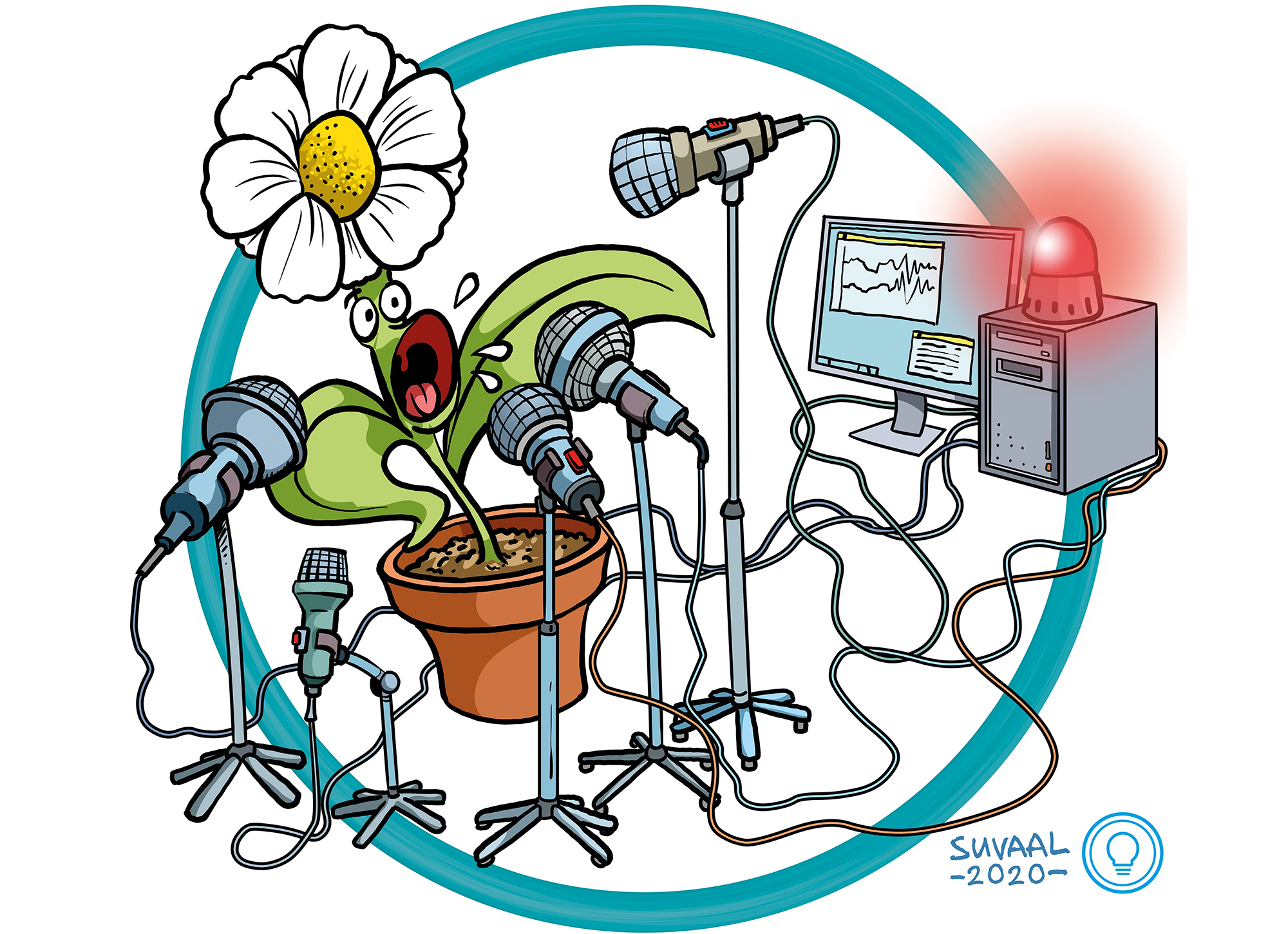Plantenna - Listening to plants
Themes: High-tech, Social Impact


A TRL is a measure to indicate the matureness of a developing technology. When an innovative idea is discovered it is often not directly suitable for application. Usually such novel idea is subjected to further experimentation, testing and prototyping before it can be implemented. The image below shows how to read TRL’s to categorise the innovative ideas.
Summary of the project
Plantenna focuses on the intertwined problems of climate change, pollution and food shortages. The aim is to develop vegetation-integrated, energy harvesting, autonomous sensors that measure in-plant and environmental parameters at high resolution and low cost. This information will be used to develop methods for early detection of plant-stress and environmental influences which can be used for decision making in smart agriculture increasing food quality or crop yields.
One of the innovative ideas of the project is that researchers are able to extract physical plant-parameters by listening to plants in a novel way. Plants have been found to ‘talk’ to us: when they are very dry they will emit ultrasound and this gives us information about the condition of the plant, whether it needs water or not. The source of the sound is the nucleation or seeding of tiny air bubbles trapped in the plant’s water-carrying vessels similar to the arteries in our own body. The researchers have realized that listening to these frequencies with a special microphone tells us about the size and stiffness of these Xylem vessels. Based on this insight, they have developed a new methodology to measure the dimension of the Xylem vessels, that are essential for the plant’s transport of water and nutrients from their roots to the leaves. This provides a useful new pathway to study and control the internal development of living plants, that can improve growth and breeding of crops, flowers and fruit.
What's next?
With promising proof-of-concept results, the next step for this innovative idea is to test the method of different plant species. Further, the researchers are interested to develop cheaper and more sensitive microphones and to improve the accuracy and speed of analysing the sound from plants, across a wide range of ultrasound frequencies. Currently the researchers are looking into the possibility of using graphene, as a more sensitive material for ultrasound, high-frequency microphones.
dr. Elias Kaiser (WUR)
Faculties involved
- ME
